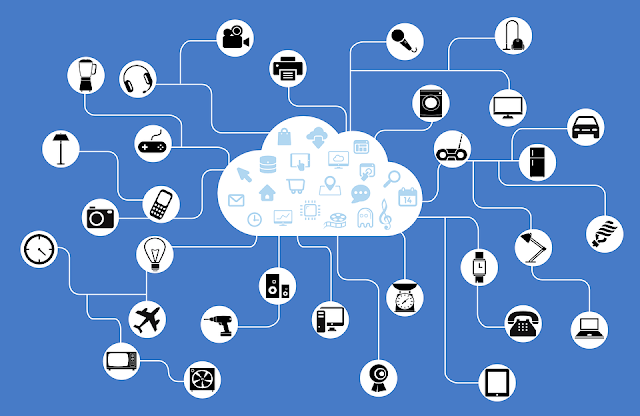During the next five years, Germany will phase out components made by Chinese companies Huawei and ZTE from its 5G wireless network. This will likely worsen its already strained ties with the second-largest economy in the world, which may further strain its relations with Germany.
According to the German Interior Ministry (BMI), by the end of 2026, components made by Chinese technology companies such as Huawei and ZTE will not be allowed to be used in the construction of the country's next-generation 5G mobile networks made by the German industry.
To comply with this decision, the BMI decided that all existing components must be replaced by the year 2029.
Considering 5G networks as a critical infrastructure, the German government maintains that they will have a key role to play in the energy, transportation, health care, and finance sectors in the coming years.
A statement made by Huawei has been issued to CNN, stating that there has been no evidence or scenario that explicitly illustrates that its technology poses any security risks.
A statement from the Chinese embassy in Germany said it was committed to taking whatever "necessary measures" to protect the interests of Chinese companies in Germany.
According to the ban, Chinese technology companies are increasingly viewed with suspicion due to their alleged too-close ties to the government in Beijing as a result of their proliferation of investments.
Particularly Beijing's desire to turn Huawei and ZTE into world leaders in higher-tech sectors has made Western governments wary of giving them too much influence over their national infrastructures, as it wants to establish them as the hub of the world's high-tech sector.
In the meantime, another collaboration between several German and Chinese companies has created a stir in the industry.
It has been announced that Luxcara, an independent asset manager based in Hamburg, Germany, has signed a contract with a Chinese company, Ming Yang, to construct wind turbines as part of a project that will be based off the coast of Germany.
Ming Yang said in a statement on July 2 that its decision was based upon an extensive due diligence exercise that covered all aspects of the supply chain, environmental, social and governance compliance aligned with the EU taxonomy, as well as cybersecurity. It was a result of independent expertise provided by reputed international advisors.
The German government also considers energy supply a critical infrastructure to generate 80% of the country's electricity by 2035 from renewable sources, which means that they will use less fossil fuels in the process.
There is no doubt that wind power will play a significant role in the future mix of electric power sources in the world.
As per official German data, during the first three months of this year, 38.5% of all electricity produced in Germany was generated by wind power, as well as 16.3% from solar energy.
Among all the renewable sources of energy, wind power has seen the most significant growth.
It has been important to Luxcara, according to Lars Haugwitz, senior consultant at Luxcara to select the most powerful turbines for their project to be a success.
DW reported that only Ming Yang could deliver the unit on time with an 18.5-megawatt capacity by the end of 2028. He added that the decision was based on a thorough review of all the bids that DW had received throughout the international tender. In Europe, Vestas, a Danish offshore wind company, and Siemens Gamesa, a German-Spanish company, have held the majority of offshore wind power installations to date. The Chinese companies are now also considered by another German wind farm operator as a possible supplier for his project.
The German business daily Handelsblatt reports that RWE, the world's biggest energy company, is among those looking for alternatives, noting that there are limited wind turbine supplies in Europe, along with high demand.
The German-based utility company recently issued a statement asserting that it currently has no Chinese suppliers within its wind energy portfolio and intends to maintain its collaboration with established European suppliers.
However, a company spokesperson informed Deutsche Welle (DW) that the offshore wind industry must evaluate the offerings of Asian suppliers to determine if they meet the necessary standards in technology, quality, safety, and cost-effectiveness.
According to Michael Tenten, managing director of Pure ISM—a company specializing in data security within the renewable energy sector—there are multiple reasons for the technological advancements of Asian companies, primarily economic. Tenten explained to DW that the swift availability of equipment is a significant factor.
However, research conducted by the Kiel Institute for the World Economy (IfW) in Germany revealed that in 2022, over 99% of listed Chinese companies benefited from direct state subsidies. These companies also enjoyed privileged access to critical raw materials, enforced technology transfers in joint ventures, and support in public procurement processes.
An example highlighted is China's car manufacturer BYD, which has emerged as the world's leading electric vehicle producer, largely due to substantial subsidies. Dirk Dohse, research director at IfW, recently told Handelsblatt that BYD has also received subsidies for battery production and component manufacturing.
Dohse noted that while European industries often struggle to compete with Chinese pricing, without China's subsidized technology, the products essential for Germany's green transformation would be more expensive and less available. Michael Tenten of Pure ISM added that another source of mistrust towards Chinese suppliers is data security concerns. He pointed out that manufacturers typically operate their own control centres to monitor the wind farms they construct, and unless these centres are located in Germany, there remains a risk of foreign influence on operations.
Lars Haugwitz of Luxcara considers this risk to be more theoretical, as there will be "no direct data link" between the German offshore wind park and the Chinese turbine manufacturer.
Haugwitz assured that the control, operation, and maintenance of the turbines would be entirely managed within Germany.
China's Ministry of Foreign Affairs issued a statement asserting that Germany’s actions severely damaged mutual trust and could affect future cooperation between China and Europe in related fields. This decision could further strain Germany’s relationship with China, its largest trading partner. Recently, Berlin blocked the sale of a Volkswagen subsidiary to a Chinese state-owned company on national security grounds, eliciting a strong response from Beijing.
Concurrently, China is engaged in a trade dispute with the European Union, which recently increased tariffs on Chinese electric vehicles.
A spokesperson for China’s Ministry of Foreign Affairs commented on Thursday that politicizing economic, trade, and technological issues would only disrupt normal technological exchanges. Germany has been deliberating for years on how to handle Huawei components in its 5G network, following the lead of the United States, the United Kingdom, Australia, and Japan, which have effectively banned the company from their 5G infrastructure due to concerns that Beijing could use Chinese tech companies to conduct espionage.


























